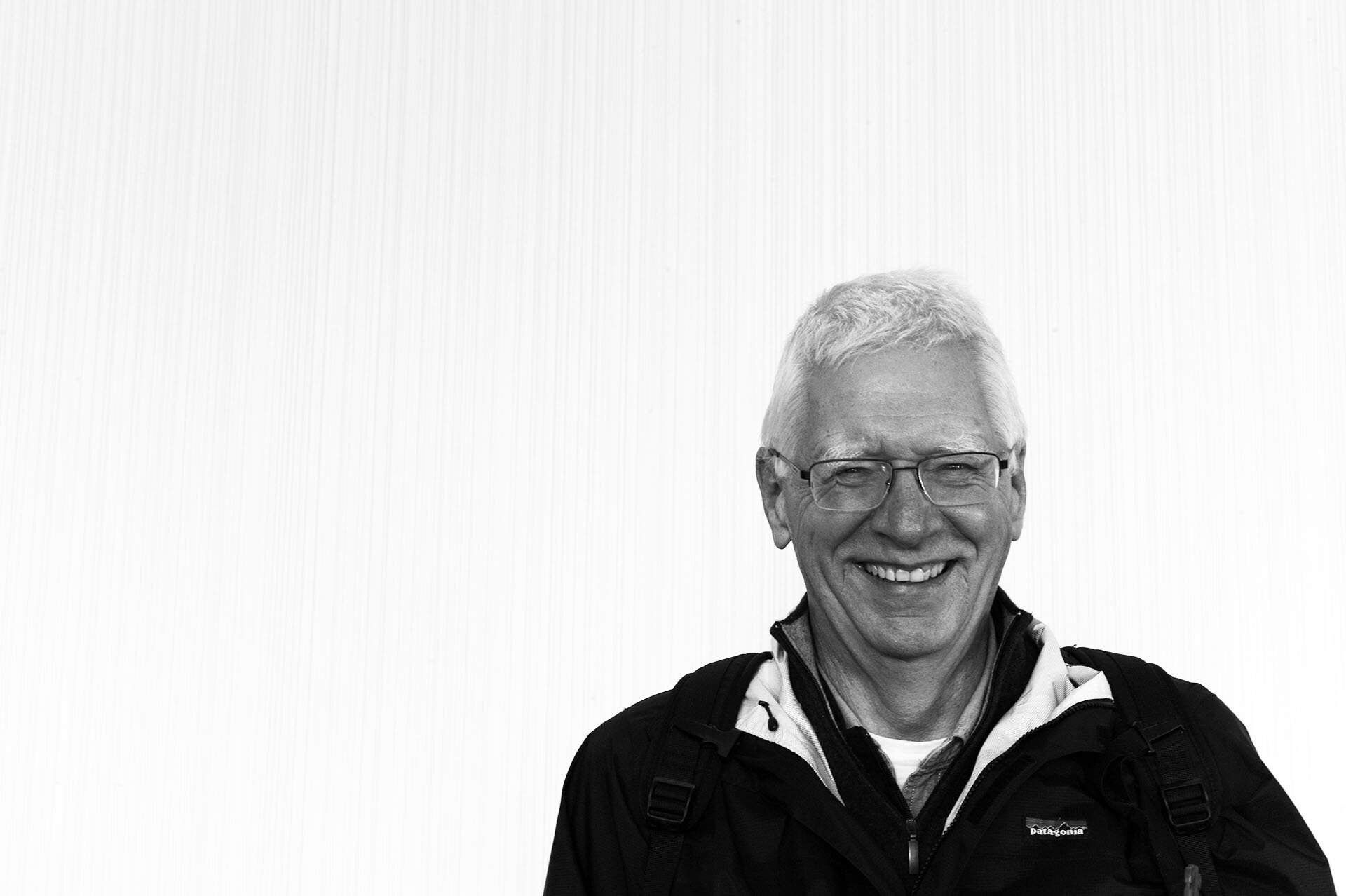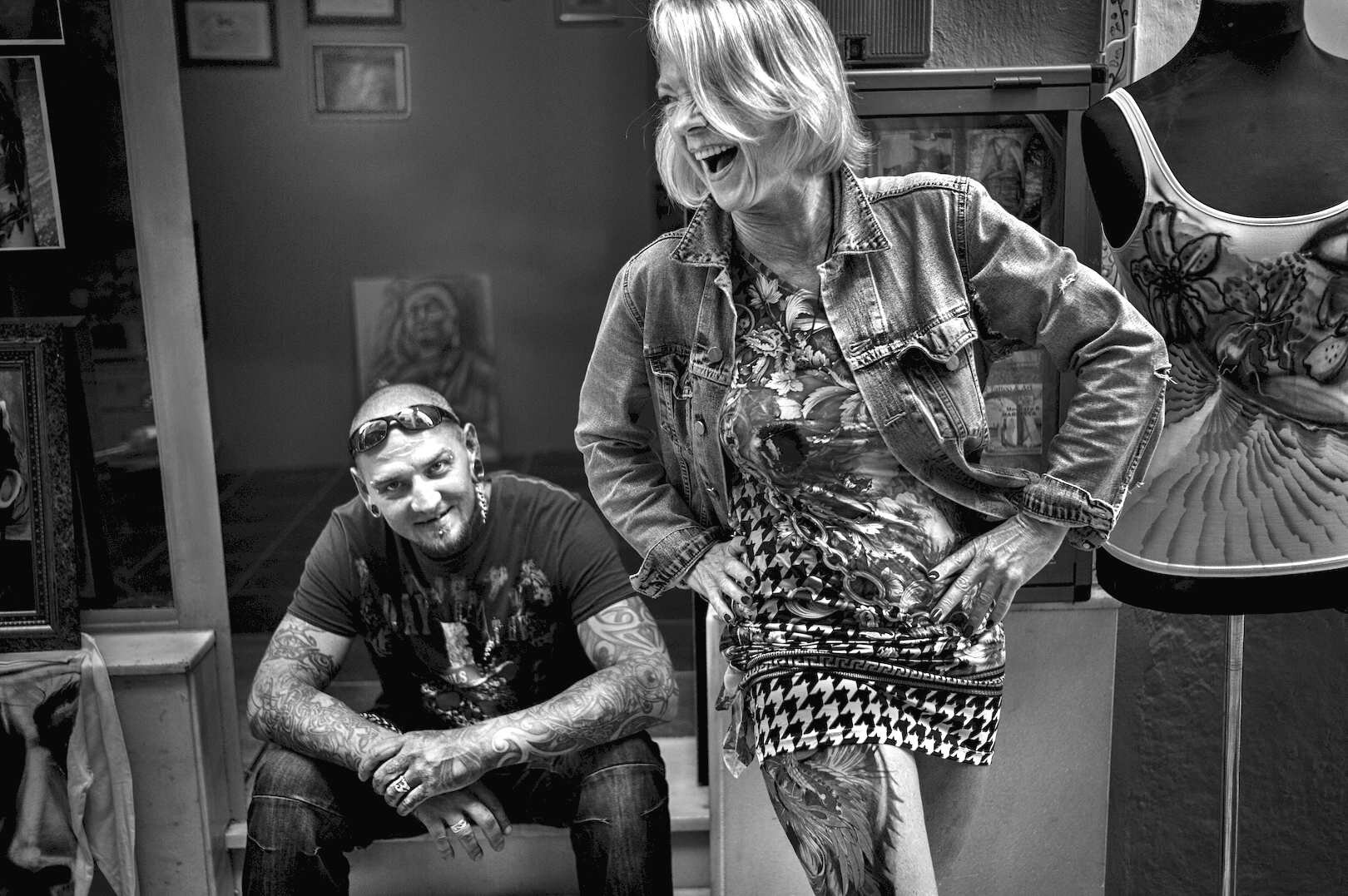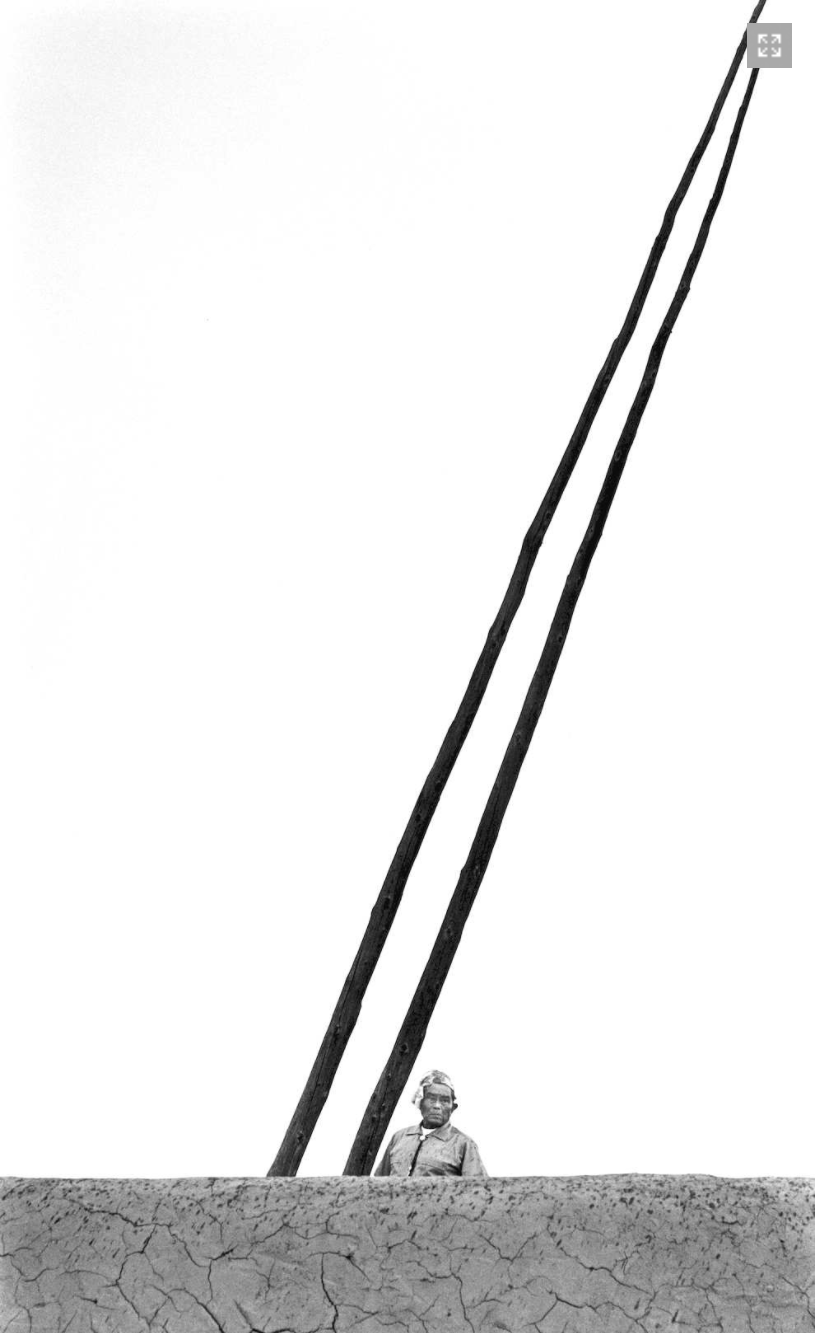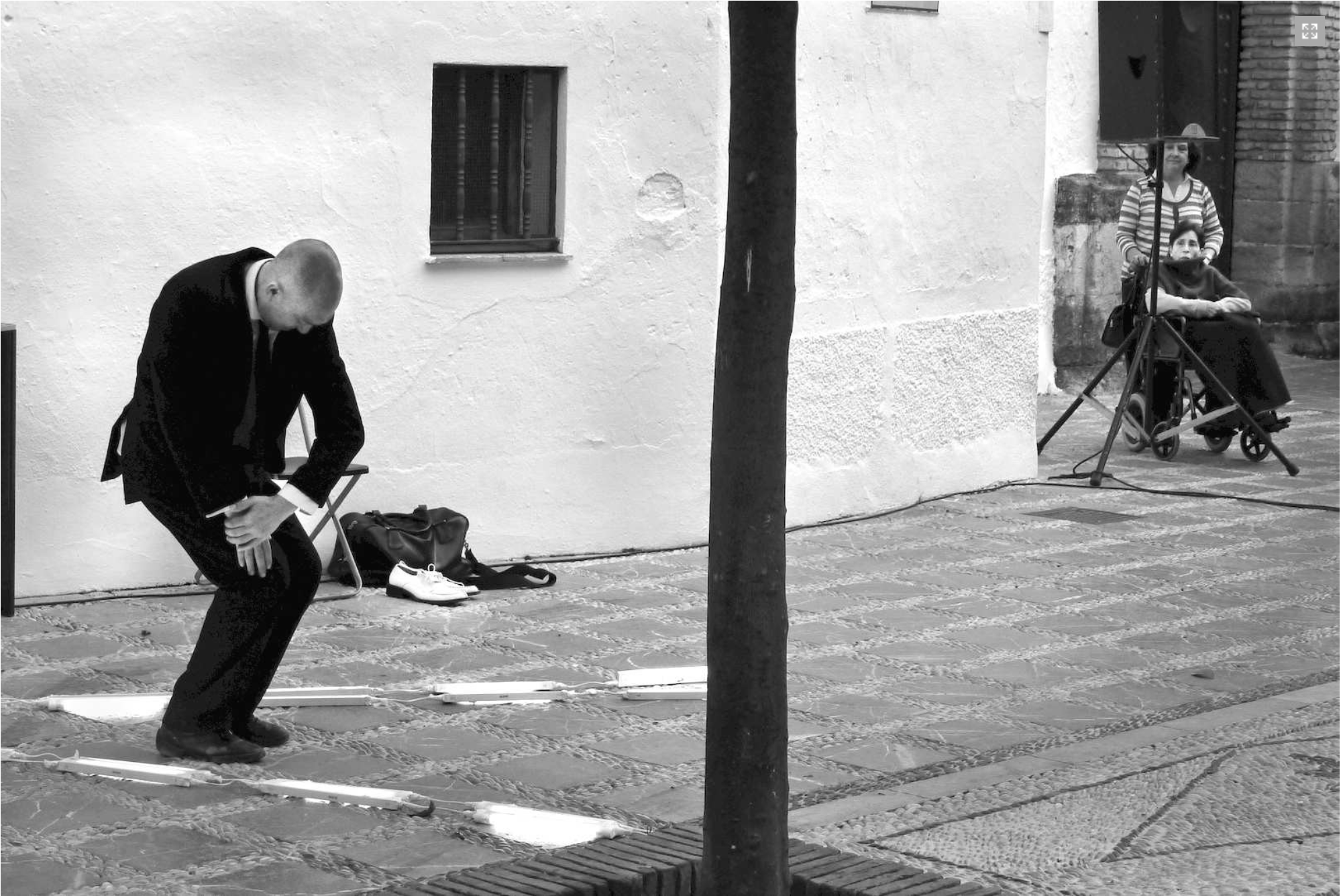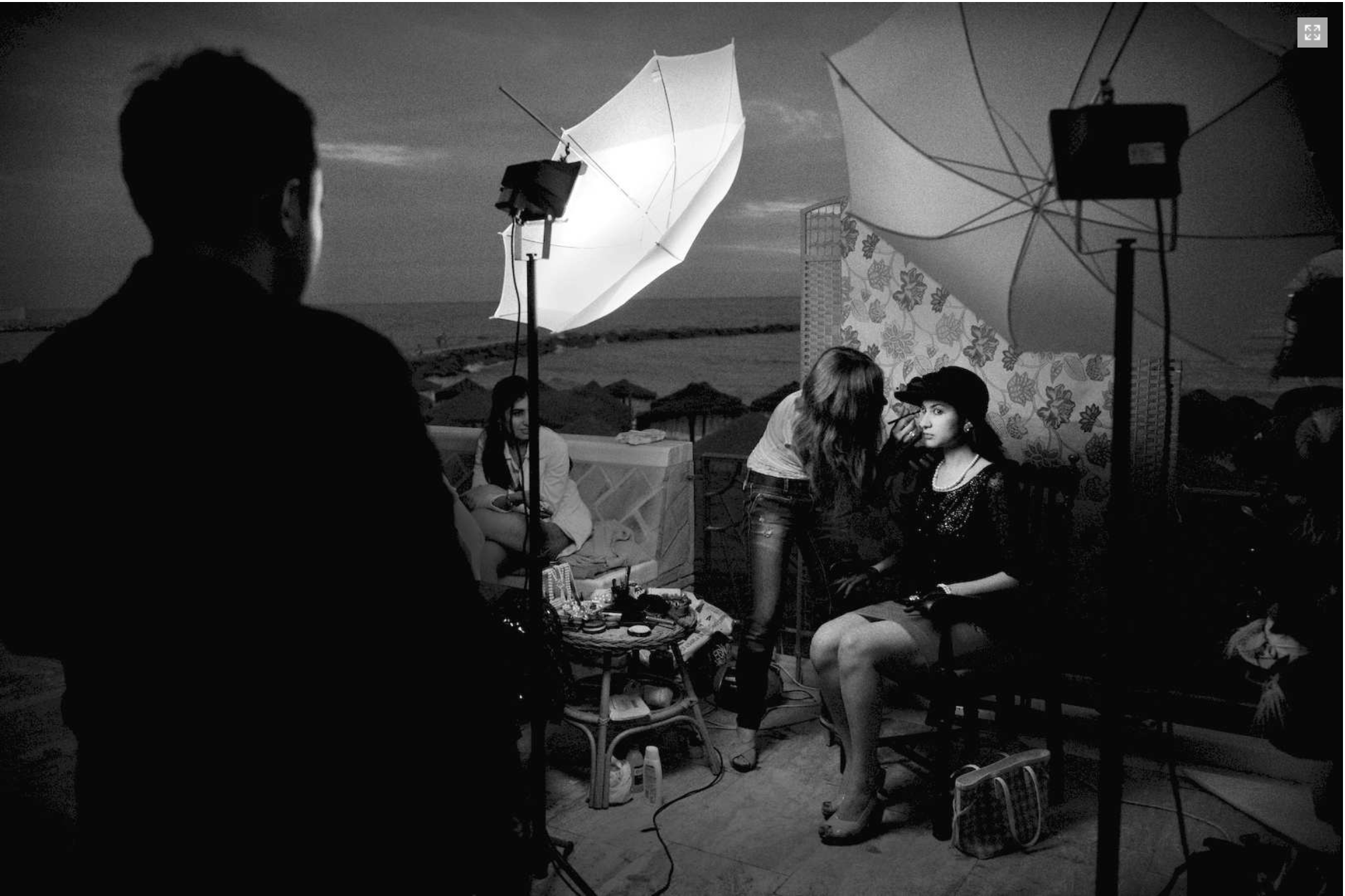5 Tips on How to Shoot Beyond the Street - with Cradoc Bagshaw (transcript from the video)
Hi, I'm Cradoc Bagshaw. I am happy to be part of LHSA because of the amount of energy around Leicas. If it weren't for Leicas I would not be nearly as happy of a photographer as I am right now.
For years I was a photojournalist, who worked for magazines, newspapers, and did a lot of corporate work. Then I wanted out of it. I started developing software for photographers and those programs set me free financially. I could shoot the black-and-white pictures that I wanted, and didn't have to worry about income.
My Five Tips on How to Shoot Beyond the Street
1. Get a comfortable pair of shoes.
If you want to be a photographer, my first tip to you is get a comfortable pair of shoes because you're going to be walking a lot.
2. Look for special relationships between people.
Street photography for most people, including me, is usually a moment, a grab shot. It's something that says funny or interesting, and often doesn't go beyond that. I've noticed that by looking for special relationships between people, I can make a photograph that goes beyond that simple statement. A simple statement might be this picture of Elvis, or a wanna be Elvis. He's weird, and that's the statement. The implication in that picture is that you know who Elvis is, but the entire story isn't in the picture it's just a phrase, it's just a word.
But in this picture of a woman walking in front of the window in Prague, there is an ideal of the portrait in the window, and there's the reality of who we are walking by. It's that relationship that makes the shot so different than the other street shots.
Click to enlarge
Click to enlarge
3. Build trust and be patient to capture candid photos.
If you’re going to shoot candid pictures, one of the most important things that you can learn is how to move into situations that let you keep shooting without being shut out, without people refusing to let you take their picture, or turning their backs on you, so you don’t get that candid sense of photography. Sometimes when you’re in a group you have to start shooting around the edges of the group, until people get used to you, and then once they trust you, you can start working yourself more and more into the group.
One example is this tattoo artist that I saw in Barbados, Spain. I was afraid that if I just started shooting pictures of his face he would get self-conscious. So, I asked him if I could take pictures of his arm. His arms were covered with tattoos, as you can see. He said fine, and I took the picture. Then I went across the alley and sat on the ground, and waited. I didn’t try to shoot anymore pictures of him. I hung around and talked to him a bit. And this woman showed up, who had tattoos on her leg. I took a picture of those, and she decided she wanted to pull her skirt up to show me the rest of the tattoo, and when she did, her neighbor down the block started teasing her. Then I was able to get the shot.
A lot of the time, I take pictures of people that are very self-conscious and it’s hard sometimes to get relaxed, candid pictures of them. One of the tricks I use is, I bring the camera up and shoot a couple of shots of them. Maybe they’re looking away and making their faces and stuff. Then I’ll lower the camera to my chin level, and I’ll start talking to them again. If they don’t look at me I’ll lean my head to side and get their eyes to look around, so that we have eye contact. Once we have eye contact, I’ll keep the camera at my chin level. They relax and I’ve got it. It almost always works. It’s one of my favorite tricks.
4. Know your frame lines.
When you are shooting pictures like this you really have to keep the camera away from your face as much as possible. One of the nice things about the Leica are those frame lines. If you know those frame lines then you can move yourself into a position without having to bring the camera up to your face. You can actually move left, right, forward and backwards, and you can compose the picture so that when the time comes to shoot, you bring the camera up momentarily, take the picture and then put it back down again. The reason that’s important, is that virtually everybody will react to a camera in front of your face.
5. Practice what you need to work on.
When you are playing a musical instrument you have to practice. But you have to practice the right thing. It’s the same with the photography. If you only practice the things you already know you won’t get any better. You have to figure out what else it is you need to work on, and practice that.
One of the things I would suggest, is that as photographers get more experienced, their images become less two dimensional, and more three dimensional. They get layered; they don’t concentrate so much on the background being out of focus, or on which lenses look the best in the background, when it’s out of focus. You start looking for things happening in the background that relate to the foreground. It’s that sort of thing you need to practice. Cartier Bresson said the first 10,000 pictures are your worst.
I would suggest looking at the background even if it blows your subject in the foreground. And the best way to practice those things are things like fairs or weddings or places where people expect to be photographed. Then you can just photograph them without their permission, generally speaking. Look for foregrounds for a while and then look for backgrounds for a while. It’s the same way as if you were practicing the piano: you work one hand, and then work the other hand. Then start putting them together.
1. Get a comfortable pair of shoes.
2. Look for special relationships between people.
3. Build trust and be patient to capture candid photos.
4. Know your frame lines.
5. Practice what you need to work on.
Special thanks to Cradoc Bagshaw:
http://instagram.com/cradocbagshaw
Thanks to Helen Todd from our social media agency, Sociality Squared.
LHSA -The International Leica Society is a nonprofit organization dedicated to all aspects of Leica Camera, including photography, research, history, documentation, and collecting. Learn more and become a member here: https://lhsa.org/join

